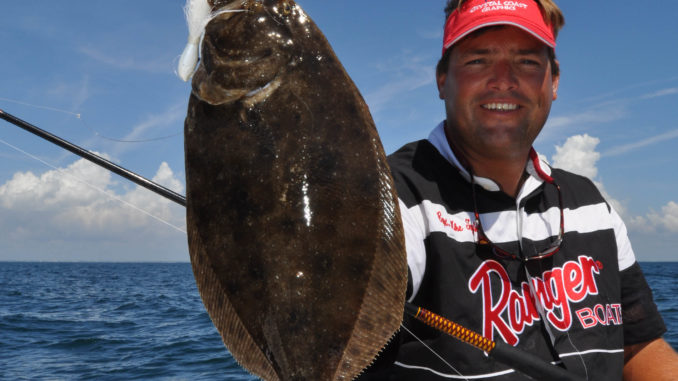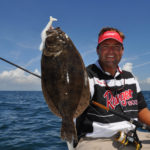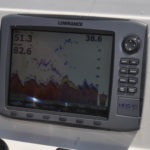
The Bogue Inlet rocks (Keypost rocks) and Bogue Inlet artificial reef are in much deeper water than the places most flounder anglers go to find fish. This particular bottom is located in more than 50 feet of water.
It takes a 2-ounce jig to fish the bottom effectively. Braided lines, which are smaller in diameter relative to test weight, are better for this type of fishing than monofilament lines. They also help the angler detect a flounder strike and set the hook because they have less stretch.
The up-and-down motion of the boat on a rolling ocean created the ripple pattern along the bottom, not the actual bottom contour. A slow current and calm winds dictate whether the day will be good for bottom bumping. Relief areas of three to six feet in elevation may actually show. But, it is more likely that a good flounder bottom will show as patches of different light colors, rather than the dark, solid colors of a level bottom that gives a stronger echo return. Baitfish will show on the bottom as well as higher up in the water column above a good flounder bottom.
Editor’s note: This article is part of the Bump the bottom feature in the July issue of North Carolina Sportsman, which is now on newsstands. Digital editions also can be downloaded right to your computer or smartphone.
Be sure to subscribe to ensure you don’t miss a single information-packed issue of North Carolina Sportsman.




Be the first to comment